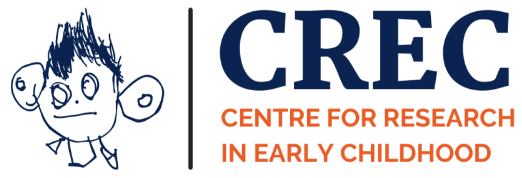Exploring the Joyful Path to Development
by Francesca Brown-Cornwall
Can adults encourage higher-order thinking and pleasure in two-year-old children simultaneously? This question lies at the heart of my intriguing research study that seeks to illustrate the links between cognitive processes, pleasure and practical strategies for early childhood educators. This blog provides a taster for my session at the upcoming BECERA conference on the 17th February.
My passion for this subject begun back on my Foundation Degree in Early Years where I was thoroughly enjoying my time as an Early Years Practitioner in the two-to-three room. This rolled into my top-up degree dissertation, and Masters degree research and followed me through all sorts of professional roles until, ‘hey presto’ I’m a full-time lecturer and part time PhD candidate STILL fascinated by smiles, laughter and thinking in two-year-old children… who knows where those early study interests can take you?
The primary research question driving this study is: Can adults provoke Higher Order Thinking (HOT) and pleasure simultaneously for positive developmental progress in two-year-old children? To unpick this, the study explores two sub-questions:
What activities or conditions elicit Higher Order Thinking, smiles, and laughter in two-year-old children?
What can adults do to maximize this in practice?
This investigation builds upon findings presented at BECERA in February 2023. That earlier study explored adult perspectives on the links between higher-order thinking and emotional expressions in young children. You can read more about it here. This new research builds upon this groundwork by investigating five multi-modal case studies from participants at four school-based nurseries and one sessional care service.
The study adopts a praxeological design, rooted in the work of Pascal and Bertram (2023) and Oliveira-Formosinho and Formosinho (2012). This approach emphasises collaboration with early childhood educators, making their values, processes, and reflections visible. At my previous attendance at BECERA 2023, I was delighted to hear about this stance in more depth, as it validated for me that there is an appetite for my research (and more like it).
This present study employs a multi-modal case study approach which utilises both explicit and implicit data collection tools. Explicit tools included semi-structured focus group interviews, along with submitted videos and photographs that captured anecdotes referenced by participants. The implicit tool included the video calls themselves, which provided valuable data through participants’ visuals, tonality, expressions, and relationships during the interviews.
In my upcoming session I’m looking forward to sharing with you the key findings. These were discovered through discursive, content, and thematic analysis, with several key themes (still working labels) emerging
Relationships
Playful learning; performance, literacy activities and sensory play,
Human biology
Equity
Humour and development
Language of laughter.
These findings reiterate the importance of fostering meaningful connections and joyful engagement in early childhood settings. Implications for practice pertain to the process of adults achieving high-quality relationships with and between children, plus the conscious prioritisation of sharing in smiles and laughter during activities which can cause states of eudemonia, thus creating positive dispositions for pleasure and development to co-occur in children. The conditions optimal for this relate to adults ‘performing’ during activities to encourage suspense, anticipation, memory recall, repetition and providing opportunities for children to express themselves in diverse ways. Finally, it is proposed that such practice is an equitable and universal sustainable method of impactful support for two-year-old children as we can all be experts in cultivating smiles and laughter.
Here's two activities you might want to try with two-year-old children in the meantime, to see and trial this for yourself:
The Laughter Train
Toddlers form a train by holding hands with family or friends and take turns leading the group. As they move around, they make playful train noises and giggle together, building a sense of camaraderie and shared joy. To increase patterns in breathing and movement, the adult needs to role model and help toddlers imitate inhaling with a high “choo choo” and exhaling with a low “chug, chug, chug” - admit it, you’re choo chooing and chug chugging with your breath now aren’t you?
Laughter Yoga Circle Time or Turn Taking
Sit in a circle or opposite each other. Each person has the opportunity to give their “best laugh, scariest laugh, quietest laugh, loudest laugh, etc.”
Let’s continue to explore these joyful pathways and unlock the full potential of early childhood education in my upcoming session at BECERA 2025 – I look forward to seeing you there! Here’s a handy infographic to remind you of the themes we will chat about.
About the author
Francesca Brown-Cornwall is a Lecturer at the University of Staffordshire. She’s a Senior Fellow of the HEA and the Early Years Consultant for the Staffordshire University Multi-Academy Trust and an Innovator for the Staffordshire Centre of Learning and Pedagogic Practice (SCoLPP).
If you’re interested in this, you may also like
Quinones, G. and Pursi, A. (2020) ‘Playful qualities of toddling style in adult–child interaction’, European Early Childhood Education Research Journal, 28(4), pp. 475–489. doi: 10.1080/1350293X.2020.1783923
Kucirkova, N. and Jensen, I. B. (2023) ‘Parent–child shared reading of scratch-and-sniff books: the communicative affordance of olfaction’, European Early Childhood Education Research Journal, 32(2), pp. 297–310. doi: 10.1080/1350293X.2023.2254532
Fung, W. K. and Chung, K. K. H. (2023) ‘Playfulness as the antecedent of kindergarten children’s prosocial skills and school readiness’, European Early Childhood Education Research Journal, 31(5), pp. 797–810. doi: 10.1080/1350293X.2023.2200018



